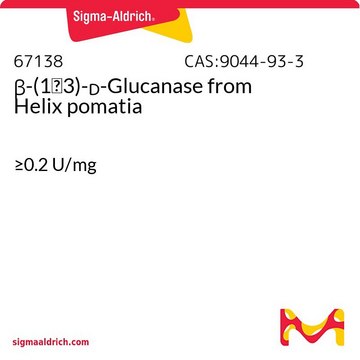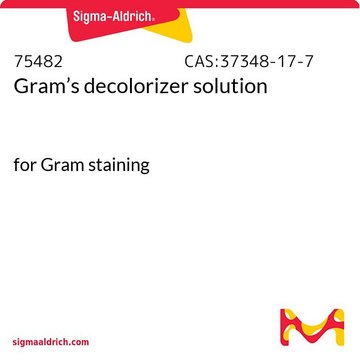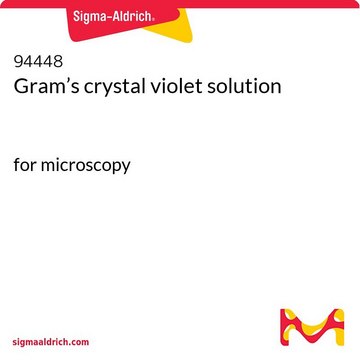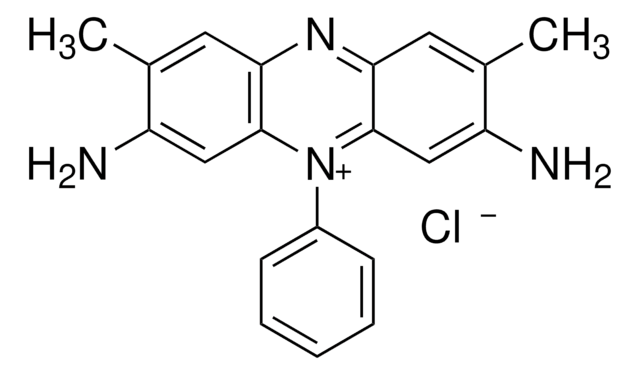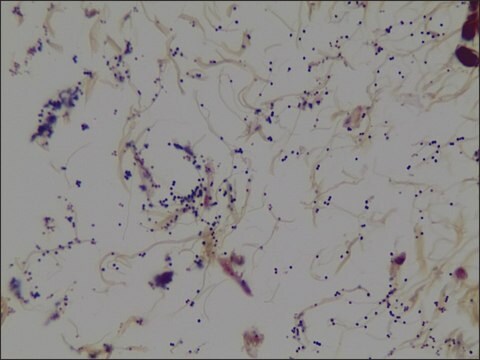77730
Gram Staining Kit
for microscopy, used for differentiation of bacteria on the basis of their gram nature.
Synonym(s):
Bacteria Staining Kit according to Gram
About This Item
Recommended Products
grade
for microscopy
Quality Level
Agency
according to GB 4789.30-2016
product line
BioChemika
shelf life
limited shelf life, expiry date on the label
technique(s)
microbe id | staining: suitable
antibiotic activity spectrum
Gram-negative bacteria
Gram-positive bacteria
application(s)
clinical testing
environmental
food and beverages
pharmaceutical
suitability
bacteria
General description
Application
Components
94448 Gram′s crystal violet Solution
90107 Gram′s iodine Solution
75482 Gram′s Decolorizer Solution
94635 Gram′s safranin Solution
Signal Word
Danger
Hazard Statements
Precautionary Statements
Hazard Classifications
Aquatic Chronic 3 - Carc. 2 - Eye Irrit. 2 - Flam. Liq. 2 - STOT SE 3
Target Organs
Central nervous system
Supplementary Hazards
Storage Class Code
3 - Flammable liquids
Flash Point(F)
68.0 °F
Flash Point(C)
20 °C
Personal Protective Equipment
Choose from one of the most recent versions:
Already Own This Product?
Find documentation for the products that you have recently purchased in the Document Library.
Customers Also Viewed
Laevis frog Oocytes in Murine Models of Melanoma, Traumatic Brain Injury and
Experimental Skin Wrinkling
Articles
Vibrio Detection
Clostridia are relatively large, gram-positive, rod-shaped bacteria that can undergo only anaerobic metabolism.
An article regarding the Role of Clostridium perfringens and their detection, identification, and differentiation from Sigma-Aldrich.com
On the Trail of Campylobacter
Our team of scientists has experience in all areas of research including Life Science, Material Science, Chemical Synthesis, Chromatography, Analytical and many others.
Contact Technical Service